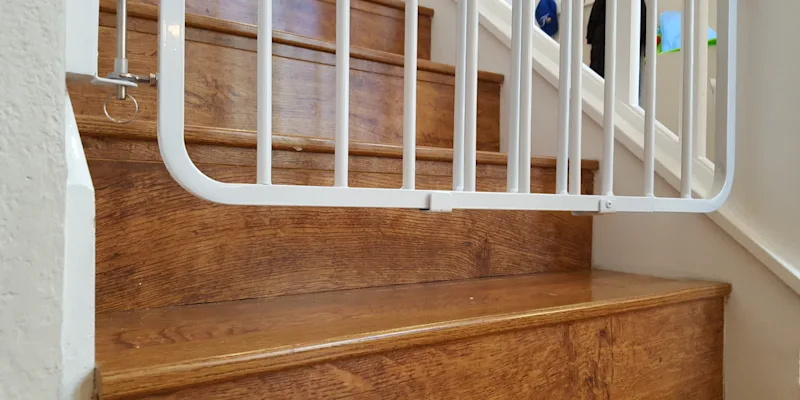As a first-time parent, I was hyper-focused on having all the necessities ready to bring the baby home: bottles, diapers (for mommy and baby), and onesies. But keep in mind that in just a few short months, babies will soon learn to roll over and crawl, and before you know it, your cute newborn will be a curious little creature getting into everything they shouldn’t be. Ideally, the best time to baby-proof is before they show signs of crawling, so you are prepared in advance.
The good news is you don’t have to baby-proof everything all at once. Here are a few ideas to keep in mind before starting to baby-proof your home. The product links are what we used as a family and enjoyed, but every home is different so consider similar products for your specific needs.
Get to know your home on your baby’s level. The best way to see your home is from your baby’s sight of view. No joke, I crawled around the floor to find all the electrical outlets, window coverings, exposed chords, and sharp edges that could be a potential hazard to curious little hands. Anything within a baby’s reach could be a hazard, so be sure to lock things away or move to a safer place.
- Purchase: Power Gear Plastic Outlet Covers, 30 Pack
Consider products that can easily be moved or taken down. Look at products that allow flexibility or have a multi-purpose use in your home. At the start of the pandemic, when I started working at home, I sectioned off part of our dining room with moveable gates so that I could watch my 4-month-old play in a safe place and still manage to get some work done. When I wasn’t working, I could easily fold up the gates and open up the room or move them to another part of the house. Bonus: if you have pets, gates can also double as a barrier to keep them in a safe space.
.png)
Keep in mind all rooms of your home. If you plan on spending most of your time in certain areas of your home, then direct your focus on those areas first, like bedrooms or the kitchen. Places that you may spend time in, plus places the baby won’t always be in like the laundry room, also need to be baby-proofed for any hazards, so make sure cleaning products and detergent are kept high off the ground away from the baby. If you have stairs, babies love to climb up and down, so check railings for stability. Gates at the top and bottom are a great tool, but you don’t necessarily need to do both. For our home, we wanted solid barriers in highly trafficked areas, so we only installed a gate to the top of the stairs and a gate in our kitchen.
Don’t neglect the outside. If your baby has easy access to the front or back yard, think about adding an extra layer of protection, like screens, extra locks, or even an alarm. Especially if you have close access to a pool, now would be a good time to check gate locks or consider adding a pool gate if possible.
Update your home as your baby grows. Every month look at what your baby is learning and think about what else they could get into. Do they want to play near the fireplace? Then check for sharp edges and hide any keys. Are they suddenly interested in opening and closing every drawer? Then add locks like these latch locks or cabinet locks. Your baby’s needs evolve as they grow, and so should your baby-proofed home.
When you start babyproofing, remember to use common sense. You know your home and as a parent, trust your gut on what your family needs. As your baby grows, evaluate what you can do to help them grow and keep them safe, and adjust products in your home as needed.


